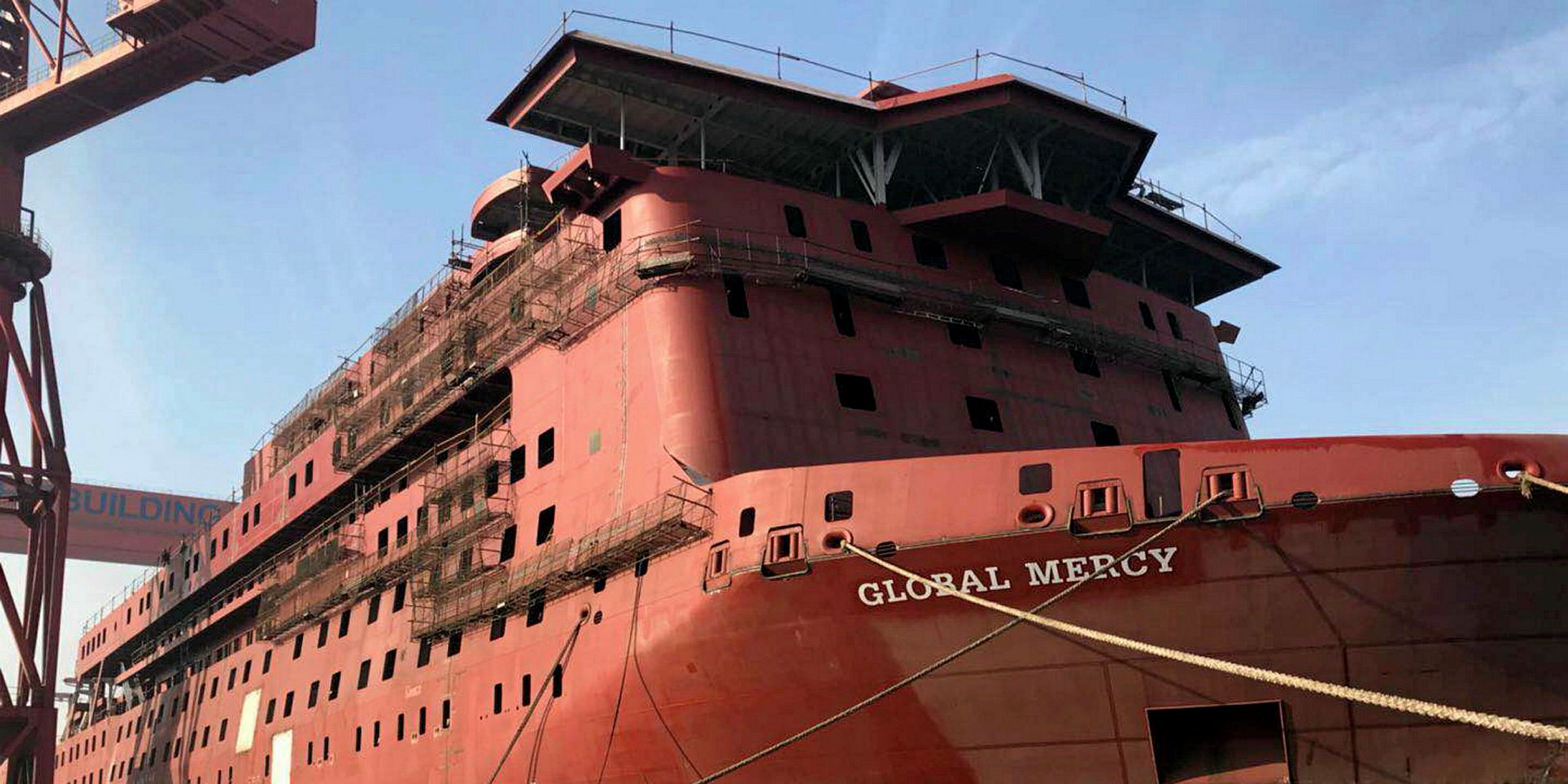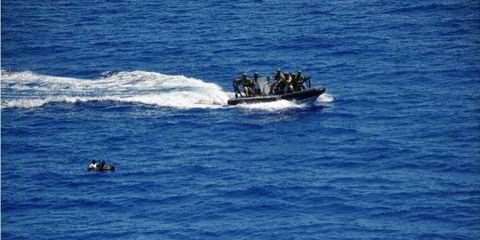A hospital vessel costing $178m at China’s Tianjin Xingang Shipbuilding Heavy Industry represents the latest realisation of a “dream that was impossible, improbable, unbelievable”.
That dream became reality after Don Stephens met Mother Teresa in Calcutta and went on to found Mercy Ships jointly with his wife, Deyon, in 1978.
Visiting London to celebrate the organisation’s 40th anniversary, Stephens discussed details of the hospital charity's first custom-designed ship, the Global Mercy, recognising the role of companies such as Stena RoRo in bringing it close to reality.

And he disclosed that through “some wonderful people, unbelievable partners, people who believe in us,” Mercy Ships has raised $150m of the $178m cost, including installation of all the medical equipment and fuel to get it through the Panama Canal to Africa.
Speaking to TradeWinds, Stephens says: “The new ship is our dream for the future. For the first time, we will be able to have one ship on either coast of Africa. We will have a small part in changing the healthcare story in Africa.”
Stena RoRo, which was involved with Finland's Deltamarin in developing the design, has a 16-strong site-management team overseeing construction of the Global Mercy, which will transfer to Subic Bay in the Philippines for hospital outfitting.
Completion of the vessel, which will have six operating theatres — some with observation theatres for training purposes — is scheduled for late 2019 or early 2020.
Stena RoRo managing director Per Westling, whose daughter served as a volunteer on Mercy Ships' 16,572-gt Africa Mercy (built 1980), spoke at a recent Mercy Ships event in Geneva of how the project was kick-started by broker BRS' vice president Gilbert Walter in 2011.
Geneva-based Walter tells TradeWinds he read about Mercy Ships in a 1997 newspaper article and followed up when he opened BRS’ Geneva office by visiting the organisation in Lausanne.
He met Westling at an event, asked if Stena RoRo could help, looked initially at converting an older Stena ferry and then persuaded Mercy Ships that if it wanted a newbuilding it should go to China for cost reasons. He said Stena should be its partner in the project to protect it from being exploited.
Acquiring and converting another vessel would have cost about the same as a newbuilding, says Walter.

BRS did not take a commission when it brokered the vessel, which Walter says will be similar to cruiseships in needing plenty of electricity-generating power due to the hospital and accommodation requirements.
Bespoke design
Complex ventilation and sewage systems are needed, low vibration is essential for the operating theatres and a high degree of segregation is required to prevent any cross-contamination within the vessel.
The Global Mercy will be light years ahead of an earlier vessel, the Anastasis, which even lacked lifts. Patients on stretchers had to be carried up steep stairways to the operating theatre using a pulley system.
The Global Mercy will have far more two-berth cabins for volunteers who currently sometimes find themselves sharing eight to 10-berth rooms with just one bathroom.
Nominal capacity in port will be 950 persons, including about 640 volunteers and guests in 277 cabins — doctors, dentists, nurses, catering staff and administrators — which means accommodation five times the size of a normal ropax, Westling says.
The figure includes also 250 patients and care givers, as well as 200 day workers.
The Global Mercy will have a draught of just 6.15 metres due to the restrictions at African ports. Four medium-speed diesel engines will power Azipod propulsors.
At 37,000 gt “it is a huge ship indeed,” says Westling.” We [Stena RoRo] are heavily committed to this project.”

Stephens says the Global Mercy is intended to serve for 50 years. He adds that Stena had been “a partner at a very big level”.
Hu Xiang, president of builder Tianjin Xingang, part of China Shipbuilding Industry Corp, attended the Geneva event. Westling says that, without the “excellent cooperation” of the yard, the project would not have been such a success.
The Africa Mercy, as well as the organisation’s previous ships — the Caribbean Mercy, Island Mercy and Anastasis — would all fit inside the Global Mercy with room to spare, says Stephens. The Africa Mercy, a converted Danish rail ferry, is already the world’s largest non-governmental hospital ship.
Doubling free care
The China newbuilding will more than double both the number of people who can be served with free medical care and the capacity for training local African healthcare professionals.
“We look to the next 40 years because it will be even greater than the past [40 years],” says Stephens who reflected on his meeting with Mother Teresa in the 1970s when she asked him, “What is your dream? What is your purpose in life?”
“I came back from 10 days in Calcutta and said to Deyon, ‘I have to start looking for ships’,” recalls Stephens, then aged 32.
Mercy Ships Global executive director Bryce Wagner tells TradeWinds: “We have realised that in Africa the need is so huge that we could have five ships and still not scratch the surface of meeting all the needs of the forgotten poor. The big thing we have on the radar is to create a way to help Africa to be self-sufficient.”
Much of the $150m raised so far has come from a handful of 20-plus, in Wagner’s words, hugely generous people. It is hoped that the Global Mercy will be delivered debt free.
Two fundraising teams are tasked separately with trying to raise the remaining capital cost of the newbuilding from individual contributions of about $50,000 to $1m, and to generate funds to operate it.
Wagner is concerned that when people read that more than $170m is being spent on the Global Mercy, some supporters may question whether their monthly donations are needed.
“The reality is that every penny counts,” says Wagner.
Operating a hospital ship is not cheap. Funding the various programmes on the Africa Mercy and general vessel operating expenses total about $16m a year, albeit “much less than a clinic or hospital anywhere in Europe,” says Wagner.
He says the biggest donors are the volunteers who pay for their flights to the ship and lodgings while on board.
Recruitment for some of the key positions on the Global Mercy has already begun. One of the big challenges is finding skilled technical crew. “It is much easier to get a nurse to come than a chief engineer,” says Wagner in a veiled rallying cry to the shipping industry.







